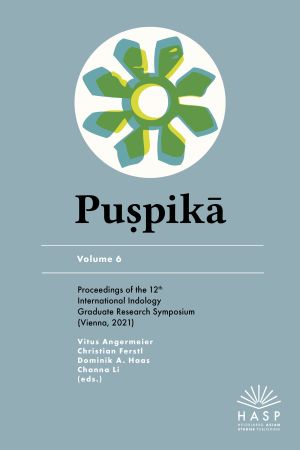Zitationsvorschlag
Lizenz (Kapitel)

Dieses Werk steht unter der Lizenz Creative Commons Namensnennung - Weitergabe unter gleichen Bedingungen 4.0 International.
Identifier (Buch)
Veröffentlicht
The Philosophical Problem of the Grammatical Gender of Terms such as ‘puruṣaḥ’, ‘citiḥ’ and ‘caitanyam’, as well as the Gender of Terms Denoting Non-Existent Things
The Sanskrit grammarians’ theory of grammatical gender is mentioned for the first time in verses that form part of the Mahābhāṣya (composed circa 150 BCE). This theory would seem to implicate the three grammatical genders in a broader theory regarding the transformation of matter and, as such, is therefore readily applicable to all words referring to concrete objects, be they animate or inanimate. Its application to words referring to abstract things, however, is harder to construe: a small number of terms that refer to the ‘ultimate reality’ or ‘consciousness’, for example ‘puruṣaḥ’, ‘citiḥ’ and ‘caitanyam’, pose a particular problem in this regard. Here, the separate philosophical assertion that the ‘ultimate reality’ is permanent and does not undergo change stands in conflict with the grammatically gendered words (implicated, therefore, in ‘transformation’) used to refer to it. Non-existent things, such as the ‘hare’s horn’ (śaśaśṛṅgaḥ), which may also be expressed with terms in different genders, are likewise problematic in this way. In this article, I shall seek to explore these problems more fully before then presenting some solutions as posited by the grammarians themselves. I will start by outlining the grammarians’ theory of grammatical gender and shall then evaluate the solutions relevant sources offer as to why it may be justified for terms such as ‘puruṣaḥ’ etc., as well as ‘śaśaśṛṅgaḥ’, to also take a grammatical gender. Finally, I will consider how Bhartṛhari (fl. circa 5th century CE) comes up with an elegant solution to this problem by resorting to a theory of the Sāṃkhya and Yoga systems of thought.
Keywords Sanskrit, Philosophy of language, Bhartṛhari’s Vākyapadīya, Patañjali’s Mahābhāṣya, Sāṃkhya/Yoga









